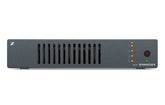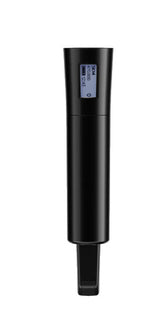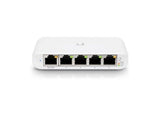Zero Trust Networking: What It Means for Your Business
Introduction: Why Zero Trust Is No Longer Optional
In 2023 alone, the average cost of a data breach reached $4.45 million, with 82% involving human error, compromised credentials, or system vulnerabilities. As traditional network security models crumble under the weight of remote work, BYOD, and cloud-based applications, Zero Trust Networking has emerged as the go-to framework for securing digital environments.
If you operate in the AV, networking, or surveillance space, you know how critical network integrity is. Whether managing enterprise-grade video systems or handling sensitive customer data, securing access points across your environment has never been more important.
This blog breaks down what Zero Trust Networking means, why it’s reshaping business infrastructure, and how you can implement it to safeguard your operations. We’ll explore real-world use cases, benefits, challenges, and best practices—giving you everything you need to start building smarter, more secure networks.
What Is Zero Trust Networking?
Zero Trust Networking (ZTN) is a security model based on a simple but powerful principle: “Never trust, always verify.” Unlike traditional network architectures that automatically trust users or devices inside a perimeter, Zero Trust assumes no implicit trust—whether access requests come from inside or outside the network.
Under this model, every access request is continuously authenticated, authorized, and encrypted. Zero Trust relies on technologies like multi-factor authentication (MFA), least-privilege access, microsegmentation, and real-time behavioral analytics to monitor and secure data flow across networks.
In industries like audio-visual systems, surveillance, and networking, where high-resolution content, IP-based control systems, and connected devices proliferate, a breach in one endpoint can compromise the entire system. ZTN provides a proactive defense against lateral attacks and insider threats.
Key Concepts of Zero Trust:
-
No implicit trust based on location (internal/external)
-
Continuous validation of users, devices, and workloads
-
Granular access control through identity and role management
-
Monitoring and logging of all network activity
-
Verification of device health and compliance
Benefits and Use Cases of Zero Trust for Businesses
Stronger Protection Against Cyber Threats
Zero Trust significantly reduces the attack surface by segmenting access and enforcing identity verification at every layer. If a hacker gains access through one device, lateral movement is restricted—limiting the potential damage.
Use Case: In a corporate AV system, compromised access to one video controller doesn’t expose the entire conference room infrastructure due to microsegmentation and restricted access roles.
Improved Visibility and Control
ZTN provides centralized control and monitoring of all network traffic—helping IT teams detect anomalies faster and implement immediate policy changes across systems and endpoints.
Use Case: Surveillance administrators can monitor camera activity and user logins in real time. Suspicious behavior (like access outside business hours) triggers an automatic lockdown of specific nodes.
Seamless Cloud and Remote Work Integration
As businesses shift toward hybrid work and cloud services, Zero Trust ensures that access remains secure regardless of device location or network.
Use Case: A remote installer accessing a surveillance system dashboard must authenticate via MFA and verify device compliance—ensuring secure configuration updates from any location.
Regulatory Compliance
Industries handling sensitive data—such as education, finance, or healthcare—benefit from Zero Trust’s ability to enforce data access policies, audit logs, and maintain compliance with GDPR, HIPAA, and other mandates.
Challenges and Considerations
While the Zero Trust model is robust, transitioning to it comes with its own set of challenges.
Initial Setup Complexity
Building a Zero Trust framework from scratch can be complex. It requires mapping data flows, identifying users and assets, and enforcing granular access policies—especially in environments with legacy systems.
Solution: Start small. Apply Zero Trust principles to high-risk areas first (e.g., admin panels, IoT devices, or cloud storage) and scale over time.
Legacy Device Compatibility
Not all AV or surveillance equipment is built with Zero Trust in mind. Devices lacking modern authentication or encryption may need to be upgraded or isolated from the core network.
Solution: Use network segmentation and virtual LANs (VLANs) to isolate legacy devices while planning phased upgrades.
User Experience Concerns
If poorly implemented, Zero Trust can add friction to users' workflows through frequent authentication prompts or delayed access.
Solution: Implement adaptive authentication, which uses context (location, device, time) to streamline verification when appropriate.
Budget and Buy-in
Like any strategic shift, implementing Zero Trust requires buy-in from leadership and a clear ROI. Without executive support, adoption may stall.
Solution: Present use cases where Zero Trust reduces breach costs, improves uptime, and ensures compliance. Position it as a business enabler, not just a tech investment.
How to Implement Zero Trust Networking in Your Business
1. Identify Critical Assets and Access Points
Map your network: identify sensitive data, critical AV components, admin portals, and surveillance endpoints. Classify them by risk level.
2. Enforce Identity-Based Access Controls
Implement identity and access management (IAM) solutions. Require multi-factor authentication and use least privilege access policies—only grant permissions necessary for each role.
Upgrade your secure AV and networking components from our Networking & Connectivity collection.
3. Use Network Segmentation and Microsegmentation
Break your network into secure zones so that if one area is compromised, the threat can’t spread. Tools like software-defined networking (SDN) can help manage microsegmentation dynamically.
4. Apply Device Verification and Endpoint Protection
Ensure only trusted devices can access your network. Use endpoint detection and response (EDR) tools to monitor device health and compliance status before granting access.
5. Monitor and Analyze Continuously
Implement real-time analytics and SIEM (Security Information and Event Management) tools. Set alerts for anomalies and automate incident response workflows.
6. Train Your Team
Cybersecurity is a company-wide responsibility. Train employees, integrators, and support teams to follow security best practices—especially for systems involving remote surveillance or smart AV setups.
FAQs
What makes Zero Trust different from traditional network security?
Traditional models rely on a secure perimeter—once inside, users often have broad access. Zero Trust eliminates that assumption by requiring continuous authentication and granular access controls for every user and device.
Is Zero Trust only for large enterprises?
No. Small and medium-sized businesses benefit from Zero Trust too—especially those with remote workforces, IP-connected AV systems, or cloud-based tools. Many scalable Zero Trust platforms are affordable and easy to adopt.
How long does it take to implement Zero Trust?
It depends on the size and complexity of your network. A phased approach can begin within weeks—starting with your most critical applications and endpoints—and expand over several months.
Conclusion: Zero Trust Is the New Standard
Zero Trust Networking isn’t a trend—it’s a strategic necessity. As AV systems, surveillance platforms, and networked devices become more intelligent and interconnected, securing your infrastructure with a Zero Trust mindset offers the highest level of protection.
The benefits are clear: fewer breaches, stronger compliance, safer remote work, and complete visibility across your environment. It’s a powerful framework for businesses of any size looking to modernize their security posture.
Ready to make your network Zero Trust–ready?
Explore networking solutions, smart surveillance, and AV tech built for next-gen security at SportsGeekUSA.











